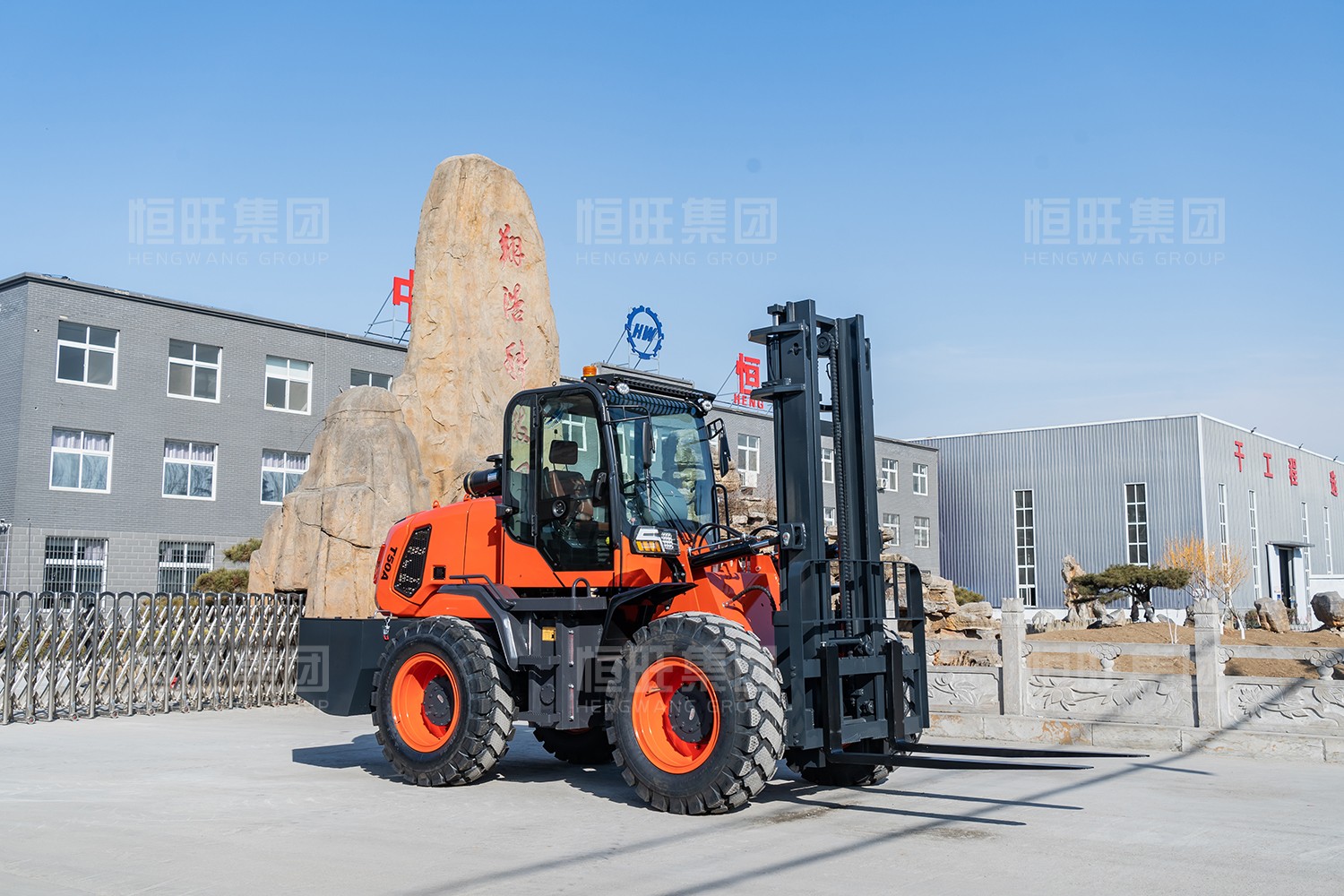When a rough terrain forklift experiences jitter during loading (e.g., fork lifting, lowering, or mast tilting), follow these troubleshooting steps:
1. Basic Component Inspection
Start with basic components for rough terrain forklift loading jitter. Check if tire pressures are consistent (inflate as needed), adjust chain tension if uneven, and inspect the inner mast, fork frame, rollers, and bearings for wear. Replace or adjust severely worn parts, as these are common causes of jitter during rough terrain forklift loading.
2. Hydraulic System Maintenance
The hydraulic system is key to addressing rough terrain forklift loading jitter. Ensure the reservoir has sufficient hydraulic oil (top up if low). Raise and lower the forks repeatedly under no load to vent air from the cylinders. If jitter persists, check suction pipe joints for tightness and sealability, and clean the filter to resolve hydraulic-induced rough terrain forklift loading jitter.
3. Roller Issue Handling
Abnormal rollers can also cause rough terrain forklift loading jitter. Replace rollers with excessive roundness error or poor rotation. Inspect welds between roller shafts and the mast, repair cracks, and lubricate rollers to ensure smooth rotation, preventing jitter during rough terrain forklift loading.
4. Mast and Fork Frame Check
Jitter during rough terrain forklift loading may stem from a deformed mast or fork frame. Discard components if the mast columns/beam or fork frame are deformed (flatness deviation >2mm), laterally open, severely corroded, or with worn guide rails. For local deformation, use flame straightening to eliminate rough terrain forklift loading jitter risks.
Mastering these methods resolves rough terrain forklift loading jitter effectively. Routine pre-operation checks further reduce faults, ensuring safe and efficient operations.

